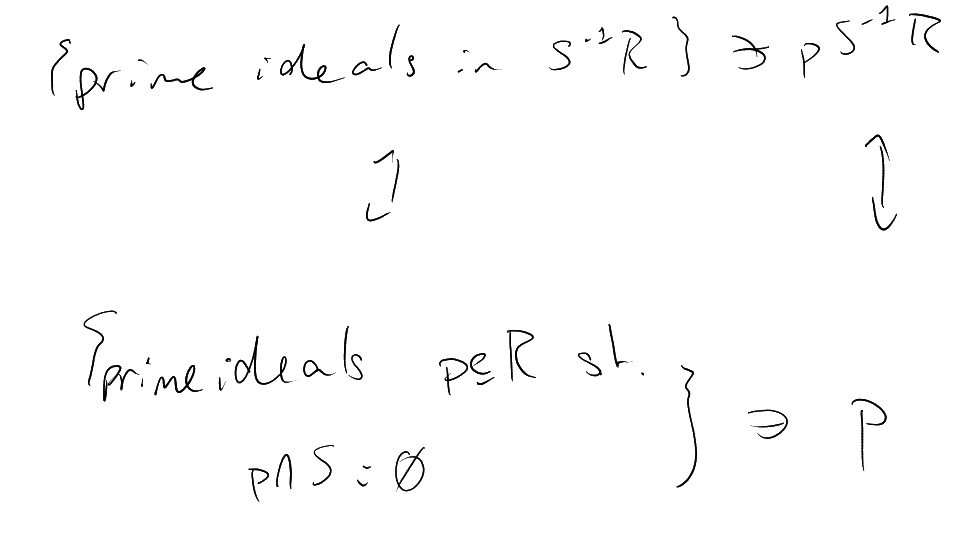9 Dedekind domains
Definition 9.1 (Dedekind domain).
A Dedekind domain is a ring
such
that
-
(i)
is a Noetherian integral domain.
-
(ii)
is integrally closed in .
-
(iii)
Every non-zero prime ideal is maximal.
Lemma 9.3.
Assuming that:
-
is a Noetherian ring
-
a non-zero ideal
Then there exists non-zero prime ideals
such that .
Proof.
Suppose not. Since
is Noetherian, we may choose
maximal with this property. Then
is not prime, so there exists
such that .
Let ,
.
Then by maximality of ,
there exist
and
such that
and .
Then .
□
Lemma 9.4.
Assuming that:
Then if , we
have .
Proof.
Let .
We write
for some .
Let
be the matrix
and set .
Then in
Multiply by , the
adjugate matrix for .
We have
Hence .
But
is a monic polynomial with coefficients in .
Then
is integral over ,
hence .
□
Proof of Theorem 9.2.
-
Clear.
-
We need to show
is a PID. The assumption implies that
is a local ring with unique maximal ideal .
Step 1:
is principal.
Let .
By Lemma 9.3,
for some .
Let
minimal such that ,
then we may choose .
Set .
Then we have
and hence .
If ,
then
by Lemma 9.4 and ,
contradiction. Hence ,
so
is principal.
Step 2:
is a PID.
Let
be a non-zero ideal. Consider a sequence of fractional ideals
in .
Then since ,
we have
for all
by Lemma 9.4. Therefore since
is Noetherian, we may choose
maximal such that .
If ,
then .
So we must have ,
and hence .
□
Let be an integral domain
and a multiplicatively
closed subset (
implies , and
also have ). The
localisation
of with
respect to
is the ring
|
|
If is a prime ideal
in , we write
for the localisation
with respect to .
Example.
-
,
then .
-
,
,
where
is a rational prime.
Facts: (not proved in this course, but can be found in a typical course / textbook on commutative algebra)
Proof.
By properties of localisation,
is a Noetherian integral domain with a unique non-zero prime ideal .
It suffices to show
is integrally closed in
(since then
is a Dedekind domain hence by Theorem 9.2,
is a discrete valuation ring).
Let be
integral over .
Multiplying by denominators of a monic polynomial satisfied by
, we
obtain
with ,
.
Multiply by .
Then
is integral over ,
so .
Hence .
□
Example.
,
, then
is the
-adiv
valuation.
Theorem 9.7.
Assuming that:
Then can be
written uniquely as aproduct of prime ideals:
(with
distinct).
Remark.
Clear for PIDs (PID implies UFD).
Proof (Sketch).
We quote the following properties of localisation:
-
(i)
for all prime ideals .
-
(ii)
If a Dedekind
domain,
non-zero ideals, then
|
|
Let
be a non-zero ideal. By Lemma 9.3, there are distinct prime ideals
such
that ,
where .
Let be a prime ideal,
. Then property
(ii) gives that ,
and hence .
Corollary 9.5 gives
for some .
Thus
by property (i).
For uniqueness, if
then
hence
by unique factorisation in discrete valuation rings. □

